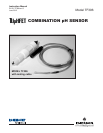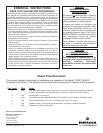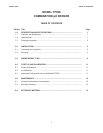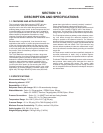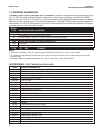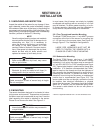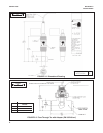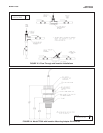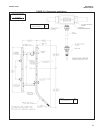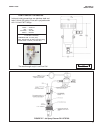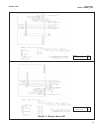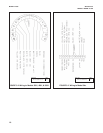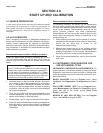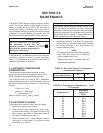
greater than typical teflon or ceramic junctions) is made of
micron-sized reference pathways allowing for ionic
exchange but preventing plugging by larger particles and will
continue to send a steady pH signal, even in the dirtiest of
applications. The field-proven TUpH reference junction tech-
nology results in greatly reduced maintenance requirements.
The TUpH helical reference pathway resists reference poison-
ing. Ions diffuse through the reference pathways and a
charge is passed to the reference element. The reference
element must be protected from contamination by poisoning
ions such as sulfide, mercury, cyanide, and ammonia that will
cause reference drift and offsets. The TUpH sensor's long
internal reference pathway hinders the contaminants' migra-
tion to the reference element thereby providing an increased
sensor life.
All TUpH sensor models have been specifically designed for
improved performance in harsh, dirty, or abrasive applica-
tions where large quantities of suspended solids are present.
The Model TF396 offers a watertight sensor-to-cable connector
that prevents cable twisting and eliminates the need for
rewiring when replacing the sensor. The sensor cable
includes an integral preamplifier cap with mating connector
and is compatible with most Rosemount Analytical analyzers
and transmitters.
MODEL TF396 SECTION 1.0
DESCRIPTIONS AND SPECIFICATIONS
SECTION 1.0
DESCRIPTION AND SPECIFICATIONS
1.1 FEATURES AND APPLICATIONS
The ion-selective field effect transistor (ISFET) pH elec-
trode provides a stable pH measurement. Its rate of
response can be ten times faster than glass electrodes,
enabling better process control. Its short response time and
increased stability at low temperatures make it suitable for
use in cold processes like brine or water for cooling. Aging
effects caused by temperature fluctuations or large
changes of process pH are greatly reduced, providing
longer intervals between calibration and maintenance of the
sensor.
Because there is no glass bulb, it can be used in many
applications that restrict or prohibit pH glass electrodes due
to the risk of broken glass getting into the process. It may
also provide longer sensor life in processes that will break
or crack pH glass bulbs. By allowing direct installation into
the process, costs for laboratory analysis of sample lines
are greatly reduced.
The TUpH Reference technology includes a large area
reference junction for minimum maintenance requirements.
The reference junction provides an electrical connection
between the reference electrode and the sample, and helps
maintain a stable reference potential, regardless of the
change in sample pH. The TUpH reference electrode
junction (the entire plastic tip surrounding the ISFET
electrode) maintains a steady reference signal, even in dirty
applications, by resisting plugging (a common cause of pH
signal drift). This large reference junction area (400 times
1.2 SPECIFICATIONS
Measurement Range: 2-12 pH
Measuring element: ISFET
Repeatability: ±0.05 pH
Response time to pH change: 99% in 30 seconds step change
Wetted Materials: Code -01: Polypropylene, EPDM, Ryton, Silicon.
Code -02: 316SST, Titanium, Polypropylene, EPDM, Ryton, Silicon
Process Connections: Code -01: 1 in. MNPT front and rear facing threads
Code -02: 2 in. Tri-Clamp connection
Temperature Range: 0 to 100°C (32 to 212°F) @ 50 psig
Pressure Range: -10 to 100 psig (32 to 790 kPa [abs]) at 50°C
Minimum Process Conductivity: 75 µS/cm; nominal: 100 µS/cm
Cable Lengths: 20 ft, 50 ft (6 m, 18 m)
Weight/Shipping Weight: 0.45 kg/0.9 kg (1 lb/2 lb)
1



